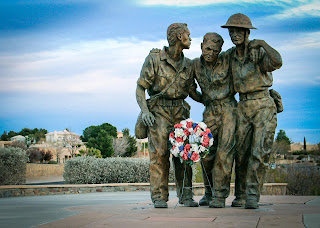Mexican-American War || Reasons, Settlement & Timeline || Mexican-American War: Things You Should Know...
The Mexican-American War, likewise referred to in the United States as the Mexican War and in Mexico as the Intervención estadounidense en México, was an outfitted struggle between the United States and Mexico from 1846 to 1848.
The Mexican-American War (1846-1848) denoted the main U.S. furnished struggle essentially battled on unfamiliar soil. It pitted a politically isolated and militarily ill-equipped Mexico against the expansionist-disapproved of organization of U.S. President James K. Polk, who accepted the United States had an "inevitable success" to spread across the landmass to the Pacific Ocean. A line engagement along the Rio Grande began the battling and was trailed by a progression of U.S. triumphs. At the point when the residue cleared, Mexico had lost around 33% of its domain, including practically all of present-day California, Utah, Nevada, Arizona, and New Mexico.
Reasons for the Mexican-American War
Texas acquired its freedom from Mexico in 1836. At first,
the United States declined to integrate it into the association, generally
because northern political interests were against the expansion of another
slave state. The Mexican government was additionally reassuring line assaults
and cautioning that any endeavor at extension would prompt conflict. Right when his proposition to purchase those territories was excused, he impelled a fight by moving warriors into a challenged zone between the Rio Grande and Nueces River that the two nations had recently perceived as a component of the
Mexican territory of Coahuila.
The Mexican-American War Begins
On April 25, 1846, Mexican cavalry went after a gathering of
U.S. fighters in the contested zone under the order of General Zachary Taylor,
killing around twelve. They then laid an attack on an American stronghold along
the Rio Grande. Taylor brought in fortifications, and with the assistance of
predominant rifles and gunnery crushed the Mexicans at the clashes of Palo Alto
and Resaca de la Palma. After two days, on May 13, Congress pronounced
battle, regardless of resistance from a few northern legislators. No authority
statement of war at any point came from Mexico.
Mexican-American War: U.S. Armed force Advances Into Mexico
Around then, something like 75,000 Mexican residents lived
north of the Rio Grande. Therefore, U.S. powers drove by Col. Stephen W. Kearny
and Commodore Robert F. Stockton had the option to overcome those terrains with
negligible obstruction. Taylor in a like manner experienced little difficulty
progressing, and he caught Monterrey in September.
With the misfortunes adding up, Mexico went to old reserve
General Antonio López de Santa Anna, the charming strongman who had been living
someplace far off, banished in shame in Cuba. St Nick Anna persuaded Polk that
he would end the conflict based on conditions good for the United States
whenever permitted to get back to Mexico. Yet, when he showed up, he promptly
betrayed Polk by assuming command over the Mexican armed force and driving it
into a fight. At the Battle of Buena Vista in February 1847, Santa Anna
experienced weighty losses and had to pull out. Regardless of the misfortune,
he expected the Mexican administration the next month.
They then started
walking toward Mexico City, basically following the very course that Hernán
Cortés followed when he attacked the Aztec realm. The Mexicans opposed Cerro
Gordo and somewhere else, yet were outperformed each time. During
that conflict, a gathering of military school trainees the supposed niños héroes-purportedly
ended it all as opposed to giving up.
Settlement of Guadalupe Hidalgo Ends the Mexican-American War
Guerilla assaults against U.S. supply lines proceeded, yet
in every way that matters, the conflict had finished. St Nick Anna surrendered,
and the United States sat tight for another administration fit for exchanges to
frame. At long last, on Feb. 2, 1848, the Treaty of Guadalupe Hidalgo was
marked, laying out the Rio Grande and not the Nueces River as the U.S.- Mexican
line. Under the arrangement, Mexico additionally perceived the U.S. extension
of Texas and consented to sell California and the remainder of its domain north
of the Rio Grande for $15 million or more the suspicion of specific harm
claims.


.jpg)
.jpg)
.jpg)




0 Comments
If you want me to publish history that you like so tell me freely...